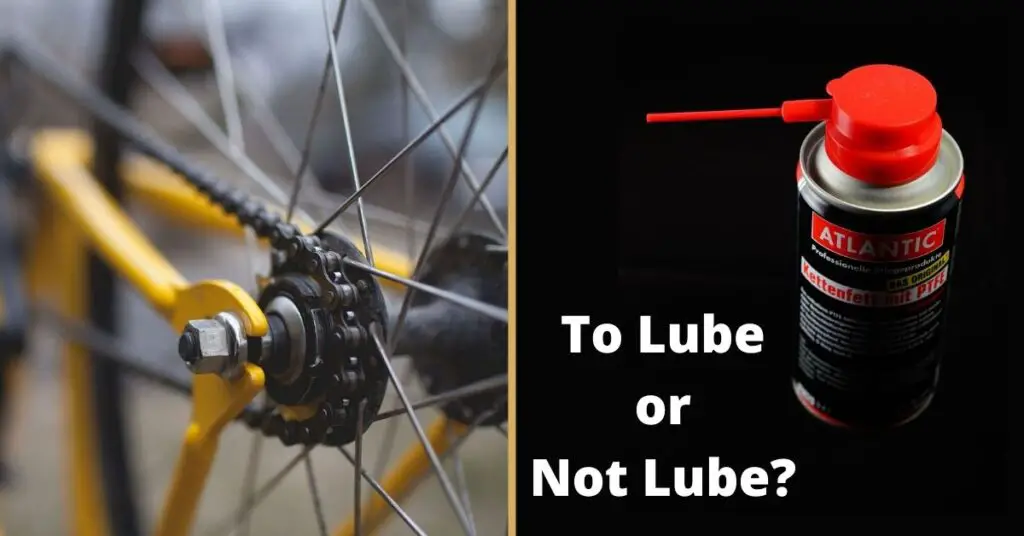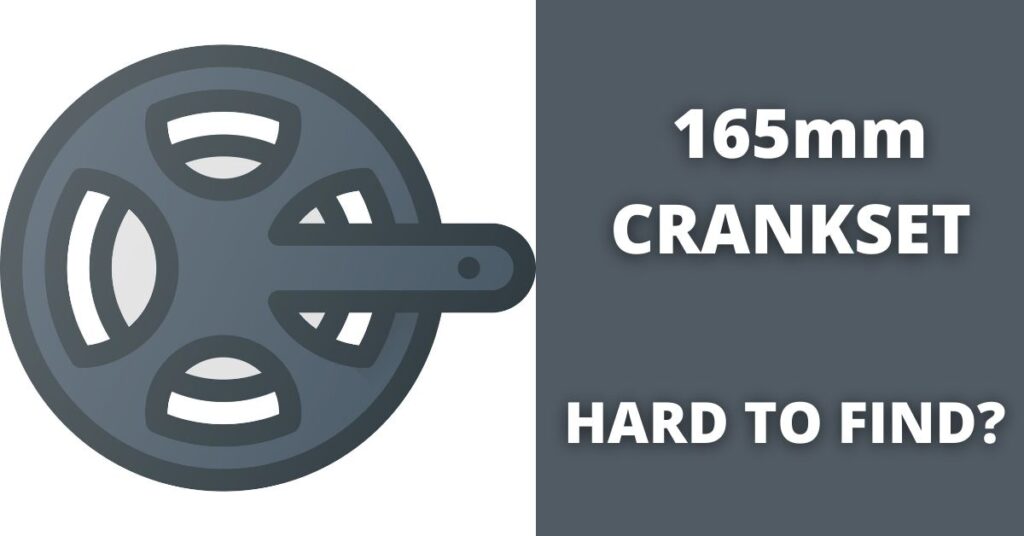Cranksets come with specific chainring sizes so you know what you’re getting when you buy a standard, compact, or semi-compact crankset.
This however doesn’t mean you need to stick to these chainrings forever. You can modify your cranksets and combine chainring sizes from different crankset types to suit your needs.
In this article, we’ll be talking about three different combinations, 53/36, 52/34, and 53/34 chainrings; if they can be used, and the advantages/disadvantages of using them.

Can You Run 53/36 Chainrings?
Yes, you can. 53 36 chainrings are now commonly used by riders and they run well without difficulties. 53 36 works on different types of bikes and is suitable for various terrains.
You should note however that converting a standard 53 39 crankset to a 53 36 is harder than changing a semi-compact 52 36 to 53 36 chainrings.
53/39 To 53/36 is Hard
Standard cranksets (53/39) usually have 130 BCD and the least chainring they can use is 38T so you can’t convert this to a 53 36. A 36T with 130 BCD is almost impossible to find and one with a 110 BCD just won’t fit. You would need to change the whole crankset which is quite expensive.
52/36 To 53/36 is Easy
A 53 chainring can however fit onto a semi-compact crankset (52/36). Only the outer chainring will be changed as you can easily find a 53T chainring with a compatible BCD with the compact. You do not need to change the whole crankset.
Doing this will not affect the performance of your crankset and you would not need to change components like front derailleurs, rear derailleurs, etc. on your bike. Only your front derailleur will need to be adjusted to give more clearance to the bigger chainring.
Pros of Using 53/36 Chainrings
Here are a few reasons why some riders combine 53 and 36T chainrings.
1- More Speed
Using 53 36T chainrings will give you more speed on flat surfaces. The difference between the 52T and the 53T you’re changing to isn’t much but you’ll still notice the difference in speed when riding on flat terrains.
You’ll be able to pedal more while still riding at a very high speed and still be able to retain your small 36T chainring for hills.
2- Climb Easier
You could say why not use a standard if speed is what you’re looking for? Well, the standard comes with 53/39 chainrings and the 39T isn’t good for climbing.
Using a 53/36 will ensure that you don’t only enjoy the speed of standard cranksets on flats, but climbing steep hills will also become easier because of the 36T chainring. You may not be able to climb very steep hills but you can still do a lot of climbing with 53/36 chainrings.
Combining these chainrings with 11 28 or 11 25 cassettes will really make a difference while you're racing with friends or mountain climbing.
Cons of Using 53/36 Chainrings
53/36 chainrings are good for the reasons we have discussed, but they have downsides too, which you should consider before going for the combination.
1- Poor Shifting
Changing your 52T chainring to a 53 will affect your shifting because there will be larger jumps between gears and a decrease in your cadence while shifting from one chainring to the other.
More than 16t difference is not advised while combining chainrings and 53/36 chainrings have a teeth difference of 17 which causes the poor shifting.
The reason behind this is that you will need to shift more cogs at the rear when changing chainrings and it will affect your shifting performance.
This shouldn’t discourage you, as your experience with this combination is based on the kind of rider you are. Some riders say the jump in gears isn’t noticeable and doesn’t affect performance while some complain a lot about bad shifting. So you could give it a try and see if it works for you
Can I Use 52/34 Chainrings?
Of course, you can use 52/34 chainrings if it suits your needs and purposes. It runs well and serves a lot of benefits but has downsides too. Your compact and semi-compact cranksets can be modified to give you this combination.
What All You Need to Change
1- You will need to change the outer ring of your compact to 52T and the inner ring of your semi-compact to 34T to get the combination if you use any of these.
2- You will also need to adjust your front derailleur or fix a new one that can take that much of a difference. Most riders use Dura-Ace Di2 front derailleurs with this combination and say it works well.
3- You should also adjust the chain to suit the new chainring you’ll be using.
Now, let’s talk about the pros and cons of this combination in detail so you can decide easily if it’s the best for you.
Pros of 52/34 Chainring
1- Climbs Faster
52/34 chainrings (in terms of speed, while going uphill) are faster than 53/36. The 34T chainring when combined with cogs like 25 or 28T can climb even the steepest of hills and you won’t lose your cadence while going uphill.
This combination is for you if you want speed on flat terrains and still be able to climb better than semi-compact 52/36.
2- Faster Descent
If you go uphill, at some point you’ll need to come back down right? This is where you’ll be glad you have 52 34 chainrings.
The 34T smaller chainring not only means you can climb faster and better, but the 52T bigger chainring also ensures that you descend fast at a very amazing speed. This is essential if you live in hilly areas.
With the 50T chainring, you’ll spin out while descending and this will make you very slow and lag behind your mates, but changing it to a 52 requires less effort to spin which is necessary.
The bigger chainring also means you do not lose out on speed while riding on flats. This is why racing bikes are always set up with large chainrings like 52T upward.
3- More Cadence
If you’re using a semi-compact crankset (52/36) and you aren’t getting enough cadence, then a 52/34 will be your best option.
Smaller chainrings are easier to pedal and the 2 tooth difference between your 36 and the 34 will really make a difference in your cadence.
You will get a higher cadence which will make cycling and riding uphill a lot easier and prevent your muscles from tiring.
Cons of 52/34 Chainrings
1- Cross Chaining
Cross chaining should be avoided as it wears down your chainrings and drivetrains faster.
With the 18t difference between 52/34 chainrings, this is likely to happen. This is because there are big jumps between gears while shifting which can cause your chain to cross.
2- Bad Shifting
Shifting from the 34T chainring to the 52T will be slower and hard because of the big difference between them.
This difference will cause a delay because the big ring will be trying to grab the chain and this will cause some noise.
It will be more frustrating if you’re riding in a terrain where you need to shift between chainrings more often.
The shifting will be worse if you are carrying some load on the bike, maybe with a rack or panniers.
3- Dropped Chains
Shifting onto the small ring from the big one may also cause your chain to drop often. The chain may fall outside or inside the chainring as you shift which can be upsetting and dangerous.
You can put a chain catcher on your bike to avoid this.
Can You Run 53/34 Chainrings?
Yes, you can. Although there is a huge tooth difference between the two chainrings which is more than allowed it can be used. You have more chance of changing a compact crankset to 53/34 chainrings instead of a standard.
Usually, standards have 130mm BCD and cannot use less than 38T. But you can change your 50/34 to a 53/34 without issues. You only have to adjust or change some components.
Components to Change
1- Front Derailleur
Most front derailleurs cannot accommodate more than a 16T difference between chainrings.
If your FD can, then you only need to move it up so it can give enough clearance to the bigger chainring you’re fixing. If not, change it. A Dura-Ace Di2 FD works best with this kind of setup.
2- Rear Derailleur
This will need to be replaced as the capacity may not be up to the new 53T chainring and may have a hard time wrapping around the chain.
You can get a medium cage derailleur if you’re using a short cage one previously.
3- Chain
Get a longer chain that can efficiently wrap around your gears. The 53T chainring you’ll be fixing is bigger than what the chain was used to so it would be shorter and would not work well with it.
An Alternate to Changing Components – Wickwerks 53/34 Crankset
The good news is, you can get 53 34 chainrings without having to modify anything, WickWerks sell a 53 34 crankset that you can just buy and install on your bike.
The crankset you modify to give you 53/34 chainrings may give you shifting issues because of the big tooth difference but WickWerks crankset shifts seamlessly and efficiently despite this tooth difference.
So if you have the money, you can just go for this. It is called an Ultra Wide and it comes in 110mm BCD with 5 bolts. It is specifically made for road bikes and works with 10 and 11-speed cassettes.
Who Are 53/34 Chainrings Good For?
53/34 chainrings are beneficial for riders who stay more in large gears. This means that the combination is perfect for you if you need large chainrings for your terrain more than the smaller ones.
This is because shifting between the two chainrings will be difficult because of the tooth difference.
It’s good for riders who have more flats than hills in their environment.
This combination also when paired with cassettes like 11 25 or 11 28 gives you a wider spread of gears. So you have lots of options to choose from in your gears.
Pros of 53/34 Chainrings
1- They Are Very Fast
Using 53/34 chainrings will allow you to ride with more speed on flats. This is good if you partake in competitive races on flat terrains and will hardly need to use your 34T.
53/34 chainrings are not only good for achieving speed on flats, but they also help in descents too. Combining 53T chainring with smaller cogs will get you down faster than any chainring if you can push it. This is why it is better than a compact 50/34.
2- They Climb Better
53/39 chainrings are good and can give you maximum speed on flats and descents but climbing with them is hard, and that is where 53/34 chainrings come in.
This combination gives you the advantage of speed on flats and descents, and also a great deal of climbing efficiency.
Cons of 53/34 Chainrings
1- Poor Shifting
Shifting with these chainrings can be pretty bad because of the tooth difference.
There will be some hesitation before the big ring can pick up the chain from the small one when you shift. Most times the chain will bind rather than climb up to the big chainring and you may experience cross chaining a lot.
Final Thoughts!
Chainrings can be mixed and matched to suit your needs and purposes and we have discussed a lot about the possibilities of 53/36, 52/34, and 53/34 chainring combinations.
These chainring combinations are all good for riding fast on flats and downhills because they come with large chainrings.
They can also be used to climb as well although the 52/34 and 53/34 will climb better than the 53/36 because they have smaller inner chainrings.
The 53/34 is a good combination but the jump between the chainrings is too much. It may cause serious shifting issues. If you like wider-spaced gears or chainrings like that, you can opt for triple chainrings.
This will ensure that you have big jumps without having shifting problems. You can easily buy these cranksets in stores and online so you don’t need to modify them yourselves to get the gears you want.
All in all, choosing cranksets and combining chainrings should be a matter of need, your build, and the terrains you’ll be riding. It should be more than aesthetics or fashion trend.
Cheers!




